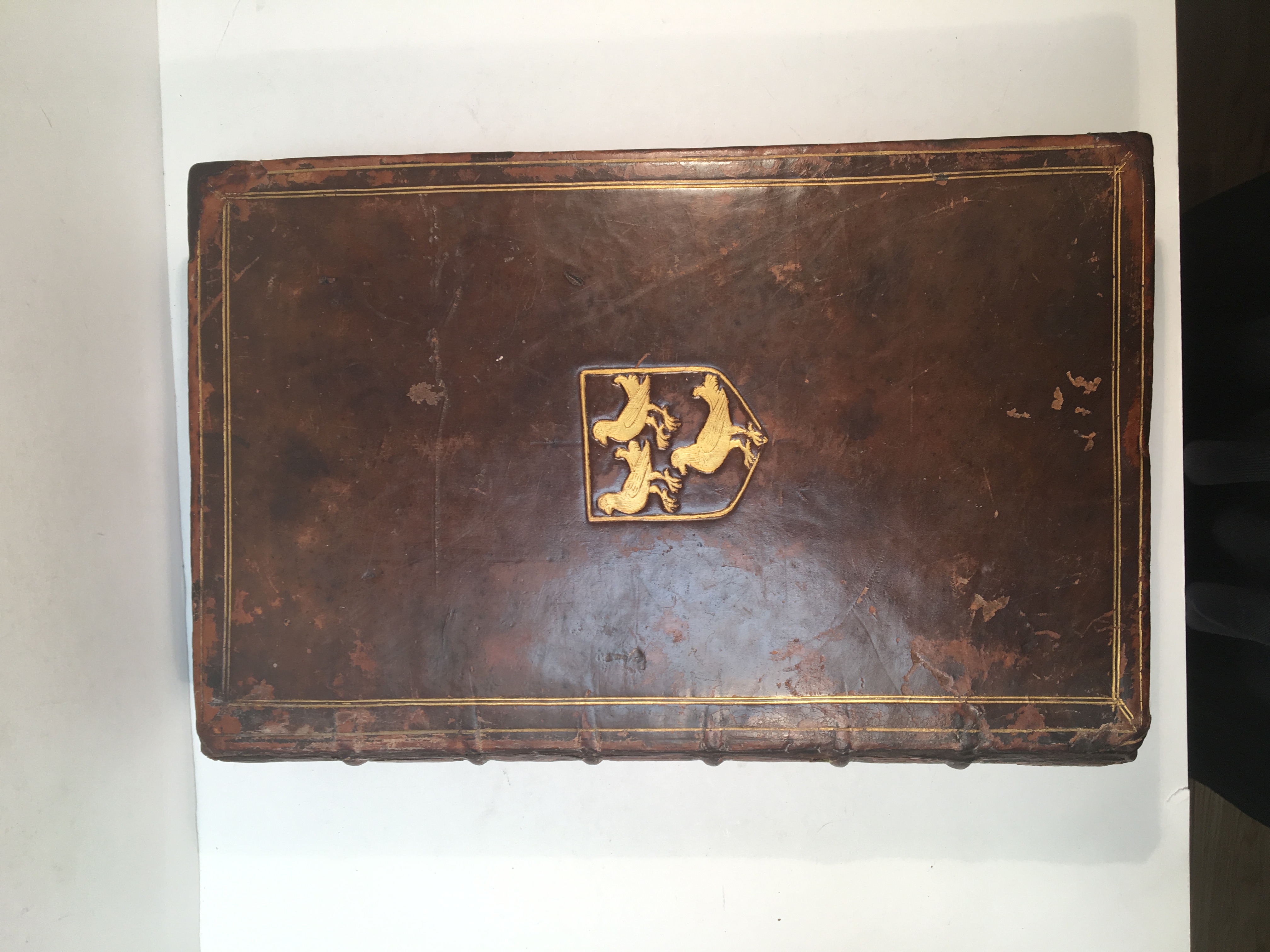D’OSSAT, Arnaud
Lettres de l’illustrissime et reuerendissime cardinal D’Ossat euesque de Baieux. Au roy Henri Le Grand
Paris, par Ioseph Bouillerot, demeurant en la rue de Harlay au Croissant, 1624£2,250.00
FIRST EDITION. Folio. pp. 24, [ii] 313, [i]; 445, [xxi]. [a , e , i , A-2Q , ²A-3K , 3L , 3M .] Roman letter. Woodcut arms of Louis XIII on title, grotesque woodcut initials and headpieces, typographical ornaments, full page portrait of D’Ossat after prefaces, ‘Hen. Osborn’ in a contemporary hand at head and tail of t-p, C19th engraved armorial bookplate on pastedown of the Osborn family with their motto “quantum in rebus inane”. Title slightly dusty, light age yellowing, a few quires slightly browned, rare marginal mark or spot. A very good, very well margined copy in contemporary English calf, covers double gilt ruled with a panel border, arms of three martlets gilt at centres, spine with raised bands, double gilt ruled in compartments, red morocco title label gilt, joints restored, head and tail of spine and corners worn, covers a little rubbed. a.e.r.
First edition of this important collection of letters written by Arnaud D’Ossat to Henry the IV of France of great historical significance. “These letters formerly served as models for diplomats, owing not only to the importance of the questions which they treat, but especially to the talent for exposition which d’Ossat displays in them. The French Academy inscribed Ossat among the “dead authors who have written our French language most purely”. Wiquefort in his “Mémoires sur les ambassadeurs” finds in them “the clearest and most enlightened judgment ever displayed by any minister”, and Lord Chesterfield wrote to his son that the “simplicity and clearness of Cardinal d’Ossat’s letters show how business letters should be written.” Catholic Encyclopaedia
D’Ossat was a French diplomat and writer, and a Cardinal of the Roman Catholic Church, whose personal tact and diplomatic skill steered the perilous course of French diplomacy with the Papacy in the reign of Henry IV. He supported the cause of Henry IV at Rome, whose conversion to Catholicism he prepared Pope Clement VIII to accept. In 1593, Henri IV wrote directly to d’ Ossat in Rome that he was sending the Duc de Nevers to negotiate with the Pope, and he instructed d’Ossat to share all of his knowledge of and influence in the Roman Court, as well as his wise counsel, to advance the affairs of France. His letters to the King are filled with detailed information concerning negotiations not only with France but covering most of the major events in Europe.
“Still more informative are the editions of the letters of a near French contemporary of Walsingham’s, Arnaud D’Ossat. Cardinal D’Ossat was Henri IV’s representative at Rome, and from a Roman Catholic point of view, a hero in the attempt to reunite Christendom and reconcile Henri with Spain and the Papacy. … the letters are gathered as a coherent historical narrative in a book ‘du tout utile & du tout public.’ a book which offers a course of instruction in civil prudence. They exemplify D’Ossat’s moral and political thought: ‘candeur &liberté’, ‘la parfaicte sagesse’, ‘la dexterité admirable qu’il avoit au maniment des affaires’. The reader will not find pages of ‘compliments’ and ‘flatteries’, but ‘un parfait modelle sur lequel tous les ministres des Princes de toute qualité se devront former, soit pour la facon de traitter les affaires de vive voix, ou de les faire entendre par escrit tels qu’ils sont’. They are also, then,literary or rhetorical models. Furthermore, the letters of men such as D’Ossat, men treating the affairs of great Princes, represent the most serious and noteworthy of their actions. They have more ‘naifveté than ‘harangues’. .. These kinds of writing, in short, give ‘l’ame à l’histoire’.” Jan Papy. ‘Self-presentation and Social Identification: The rhetoric and pragmatics of letter writing in early modern times.’
The shield on the binding is recoded in many examples by the Toronto database of British Amorial Bindings, many on continental books dating from the 1620s. However they have not been able to identify the owner. Henry Osborn maybe the distinguished admiral of that name (1698? – 1771).
BM STC Fr. C17th O 158.. Not in Brunet.In stock










